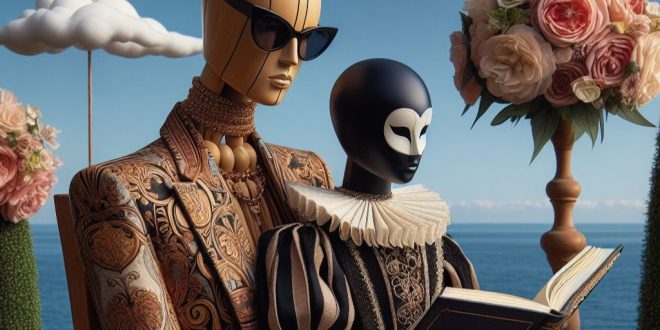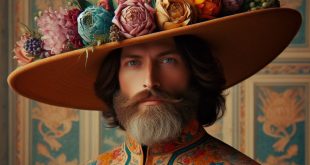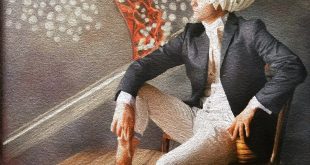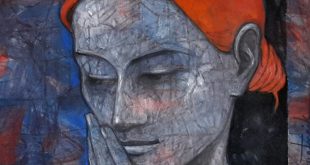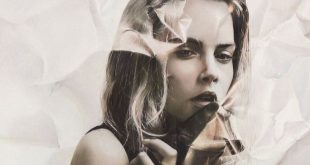Stories of wordless languages and artists who paint like designers
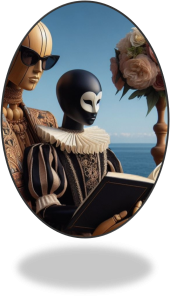 The use of mannequins https://lideamagazine.com/il-segreto-di-un-buon-manichino-e-sapere-valorizzato-gli-abiti-che-ondossa-associazione-esclusiva-con-amdrea-bonaveri/, by painters and designers it can be seen as a stylistic and practical choice that serves to enhance the art of fashion and explore broader artistic concepts. Their use, in fashion and art, can be attributed to several practical and conceptual reasons. Mannequins offer an idealized representation of the human body, free of imperfections, which can be preferable when you want to highlight the clothing rather than the person wearing it. When presenting fashion collections, the use of mannequins ensures a certain visual uniformity that allows viewers to focus on the design and fabric of the clothes without being distracted by the individual characteristics of the models. Unlike human models, mannequins are always available and require no fees or contracts, making them an economical and practical choice for artists and designers. Mannequins can be used repeatedly and do not undergo physical changes over time, making them durable tools for long-term displays or studio use. Some digital art artists, such as Dastilige Nevante, while respecting Raphael’s canons of beauty, choose to use mannequins as a means to explore themes such as anonymity, identity and the relationship between the human being and the object.
The use of mannequins https://lideamagazine.com/il-segreto-di-un-buon-manichino-e-sapere-valorizzato-gli-abiti-che-ondossa-associazione-esclusiva-con-amdrea-bonaveri/, by painters and designers it can be seen as a stylistic and practical choice that serves to enhance the art of fashion and explore broader artistic concepts. Their use, in fashion and art, can be attributed to several practical and conceptual reasons. Mannequins offer an idealized representation of the human body, free of imperfections, which can be preferable when you want to highlight the clothing rather than the person wearing it. When presenting fashion collections, the use of mannequins ensures a certain visual uniformity that allows viewers to focus on the design and fabric of the clothes without being distracted by the individual characteristics of the models. Unlike human models, mannequins are always available and require no fees or contracts, making them an economical and practical choice for artists and designers. Mannequins can be used repeatedly and do not undergo physical changes over time, making them durable tools for long-term displays or studio use. Some digital art artists, such as Dastilige Nevante, while respecting Raphael’s canons of beauty, choose to use mannequins as a means to explore themes such as anonymity, identity and the relationship between the human being and the object.
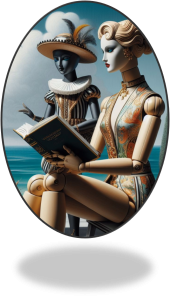
 Imagine a not-too-distant era, Italy and Florence in particular. Now, in short, ask yourself whether the Italian Renaissance https://www.britannica.com/place/Florence/History really had a significant impact on modern culture. Did he really bring with him a new vision of the individual and a passion for art and science? The Renaissance, an artistic, philosophical and cultural period that ran from the mid-14th century to the end of the 16th century, also had a vast influence on the rest of Europe. That historical period, accompanied by a new conception of the human being and his position in the world, was truly characterized by a rebirth of culture, a flourishing of the arts and sciences. For Friedrich Nietzsche, the Italian Renaissance https://artincontext.org/italian-renaissance-art/ contained within itself all the positive forces to which modern culture is owed: that is, liberation of thought, contempt for authority, victory of education against the haughtiness of the race, enthusiasm for science and for the scientific past of men, emancipation of the individual, ardent love for truthfulness and hostility towards appearance and mere effect. The Italian writer Giorgio Bassani, however, stated that Italy should be considered the cultural matrix of the modern era. For him, without the critical rethinking of the past that occurred in the Renaissance, the world, which was ancient, would not have become modern. Giovanni Allevi, an internationally renowned Italian composer and pianist, known for his contribution to the renewal of classical music, attributes to the Renaissance the newfound confidence in man’s ability to be inspired by the spark of dreams.
Imagine a not-too-distant era, Italy and Florence in particular. Now, in short, ask yourself whether the Italian Renaissance https://www.britannica.com/place/Florence/History really had a significant impact on modern culture. Did he really bring with him a new vision of the individual and a passion for art and science? The Renaissance, an artistic, philosophical and cultural period that ran from the mid-14th century to the end of the 16th century, also had a vast influence on the rest of Europe. That historical period, accompanied by a new conception of the human being and his position in the world, was truly characterized by a rebirth of culture, a flourishing of the arts and sciences. For Friedrich Nietzsche, the Italian Renaissance https://artincontext.org/italian-renaissance-art/ contained within itself all the positive forces to which modern culture is owed: that is, liberation of thought, contempt for authority, victory of education against the haughtiness of the race, enthusiasm for science and for the scientific past of men, emancipation of the individual, ardent love for truthfulness and hostility towards appearance and mere effect. The Italian writer Giorgio Bassani, however, stated that Italy should be considered the cultural matrix of the modern era. For him, without the critical rethinking of the past that occurred in the Renaissance, the world, which was ancient, would not have become modern. Giovanni Allevi, an internationally renowned Italian composer and pianist, known for his contribution to the renewal of classical music, attributes to the Renaissance the newfound confidence in man’s ability to be inspired by the spark of dreams.
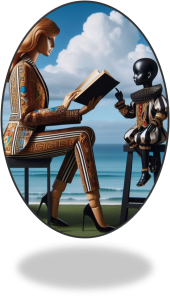
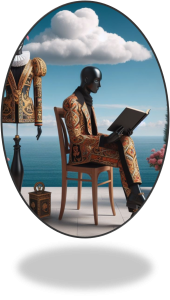 The concept of beauty in the Italian Renaissance https://www.historyhit.com/culture/female-beauty-renaissance/, was a mix of classical idealization, harmony of proportions and a celebration of humanity and nature, which was reflected in all art forms of the time. That current of thought, defined and ideally configured, formulable and usable on an intuitive, logical and practical level, was deeply rooted in the philosophy of Humanism. To understand better, man and nature had to be at the center of the artistic and intellectual universe. Renaissance artists sought to awaken and emulate the art and literature of the ancient Greeks and Romans, creating works that reflected physical perfection and symmetry. Beauty, in the Renaissance https://fashionhistory.fitnyc.edu/beauty-adorns-virtue-italian-renaissance-fashion/, was seen as a harmony of proportions and an idealized representation of nature and humanity. This manifested itself not only in visual art, but also in literature, where writers such as Petrarch and Boccaccio idealized female beauty through naturalistic images and lyrical metaphors. In art, beauty was often embodied through figures such as Venus, who Botticelli portrayed as the idealization of female beauty. Renaissance portraitists tended to avoid realistic interpretation, instead emphasizing the positive attributes of their subjects. The depiction of beauty in Renaissance art was therefore more complex than just a person’s physical appearance.
The concept of beauty in the Italian Renaissance https://www.historyhit.com/culture/female-beauty-renaissance/, was a mix of classical idealization, harmony of proportions and a celebration of humanity and nature, which was reflected in all art forms of the time. That current of thought, defined and ideally configured, formulable and usable on an intuitive, logical and practical level, was deeply rooted in the philosophy of Humanism. To understand better, man and nature had to be at the center of the artistic and intellectual universe. Renaissance artists sought to awaken and emulate the art and literature of the ancient Greeks and Romans, creating works that reflected physical perfection and symmetry. Beauty, in the Renaissance https://fashionhistory.fitnyc.edu/beauty-adorns-virtue-italian-renaissance-fashion/, was seen as a harmony of proportions and an idealized representation of nature and humanity. This manifested itself not only in visual art, but also in literature, where writers such as Petrarch and Boccaccio idealized female beauty through naturalistic images and lyrical metaphors. In art, beauty was often embodied through figures such as Venus, who Botticelli portrayed as the idealization of female beauty. Renaissance portraitists tended to avoid realistic interpretation, instead emphasizing the positive attributes of their subjects. The depiction of beauty in Renaissance art was therefore more complex than just a person’s physical appearance.
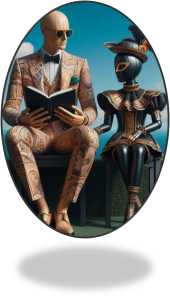 Masculine Italian Renaissance clothing was characterized by elegance, fine fabrics and a search for harmony of forms, both for men and women https://www.gardnermuseum.org/blog/francesco-pesellinos-painting-and-mens-fashion-italian-renaissance. That certain way of dressing was influenced by a search for spontaneity, naturalness and elegance. Let’s look at its main features together. Trousers, jacket and doublet. The first, tight and often made of fine fabrics, were the trousers that men wore under the doublet. The jacket, on the other hand, was a garment short at the waist with sleeves that were wider at the elbow and tended to narrow towards the wrist. Worn under the jacket, the doublet was a garment that contributed to the refined and gentle appearance of young men. Its detachable sleeves, large and sumptuous, required several meters of fabric and could be easily replaced to vary the appearance of the dress. Women’s dress in the Italian Renaissance required women’s skirts to be long and have trains https://fashiontimewarp.com/fashion-eras/renaissance/italian-renaissance-fashion-elegance/. Over time, however, the train disappeared, so for the first time the skirt was an item of clothing separate from the bodice. Women’s sleeves were still Gothic in style, but as time passed, fashion changed. The women of that historical era kept blonde as the predominant hair color and used saffron and lemon-based bleaching dyes to obtain golden hair. For makeup, they applied white lead to their faces and kept their lips red with red lead. The cosmetics also included the so-called Levant patches, precursors to the modern blush in wipes.
Masculine Italian Renaissance clothing was characterized by elegance, fine fabrics and a search for harmony of forms, both for men and women https://www.gardnermuseum.org/blog/francesco-pesellinos-painting-and-mens-fashion-italian-renaissance. That certain way of dressing was influenced by a search for spontaneity, naturalness and elegance. Let’s look at its main features together. Trousers, jacket and doublet. The first, tight and often made of fine fabrics, were the trousers that men wore under the doublet. The jacket, on the other hand, was a garment short at the waist with sleeves that were wider at the elbow and tended to narrow towards the wrist. Worn under the jacket, the doublet was a garment that contributed to the refined and gentle appearance of young men. Its detachable sleeves, large and sumptuous, required several meters of fabric and could be easily replaced to vary the appearance of the dress. Women’s dress in the Italian Renaissance required women’s skirts to be long and have trains https://fashiontimewarp.com/fashion-eras/renaissance/italian-renaissance-fashion-elegance/. Over time, however, the train disappeared, so for the first time the skirt was an item of clothing separate from the bodice. Women’s sleeves were still Gothic in style, but as time passed, fashion changed. The women of that historical era kept blonde as the predominant hair color and used saffron and lemon-based bleaching dyes to obtain golden hair. For makeup, they applied white lead to their faces and kept their lips red with red lead. The cosmetics also included the so-called Levant patches, precursors to the modern blush in wipes.
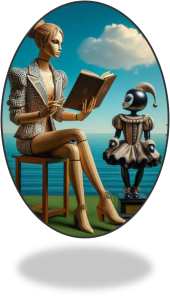 Raffaello Sanzio https://www.theartstory.org/artist/raphael/, master of the Italian Renaissance, has left an indelible mark on the history of art, influencing generations of artists with his eternal style and his search for ideal beauty. In his portraiture, which exudes a spirituality imbued with humanity, you find a canon of beauty that has remained valid for centuries. This painter, famous for his ability to portray human beauty in a sublime way, pursued an ideal of beauty based on the harmony of proportions, technical perfection and a serene and calm expression of the subjects. The beauty in Raphael’s works https://news.artnet.com/art-world/10-greatest-artworks-raphael-seraphic-genius-renaissance-ranked-1047047, characterized by balance and harmony, reveals his mastery of use harmonic laws to create a perfect balance between the parts of the face and body, reflecting the beauty of nature. The vibrant use of color and the skillful management of light contributed to giving life and three-dimensionality to his portraits, making the figures almost tangible. His skill in chiaroscuro emphasized the softness of form and spatial depth, adding a sense of realism to his works. Finally, Raphael paid great attention to detail, both in facial features and clothing, to capture the unique essence of each subject. To broaden your horizon of knowledge about other painters, you can type http://meetingbenches.com/category/paintings/. The sole purpose of this site is to spread the knowledge of these artists and that other people enjoy their works. The property of the images that appear in this blog correspond to their authors.
Raffaello Sanzio https://www.theartstory.org/artist/raphael/, master of the Italian Renaissance, has left an indelible mark on the history of art, influencing generations of artists with his eternal style and his search for ideal beauty. In his portraiture, which exudes a spirituality imbued with humanity, you find a canon of beauty that has remained valid for centuries. This painter, famous for his ability to portray human beauty in a sublime way, pursued an ideal of beauty based on the harmony of proportions, technical perfection and a serene and calm expression of the subjects. The beauty in Raphael’s works https://news.artnet.com/art-world/10-greatest-artworks-raphael-seraphic-genius-renaissance-ranked-1047047, characterized by balance and harmony, reveals his mastery of use harmonic laws to create a perfect balance between the parts of the face and body, reflecting the beauty of nature. The vibrant use of color and the skillful management of light contributed to giving life and three-dimensionality to his portraits, making the figures almost tangible. His skill in chiaroscuro emphasized the softness of form and spatial depth, adding a sense of realism to his works. Finally, Raphael paid great attention to detail, both in facial features and clothing, to capture the unique essence of each subject. To broaden your horizon of knowledge about other painters, you can type http://meetingbenches.com/category/paintings/. The sole purpose of this site is to spread the knowledge of these artists and that other people enjoy their works. The property of the images that appear in this blog correspond to their authors.
 Meeting Benches World art in all forms
Meeting Benches World art in all forms
